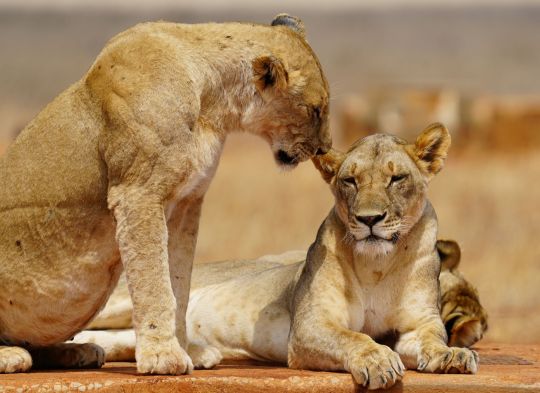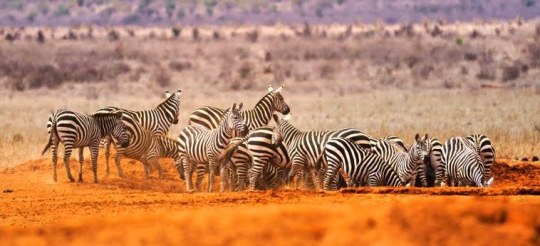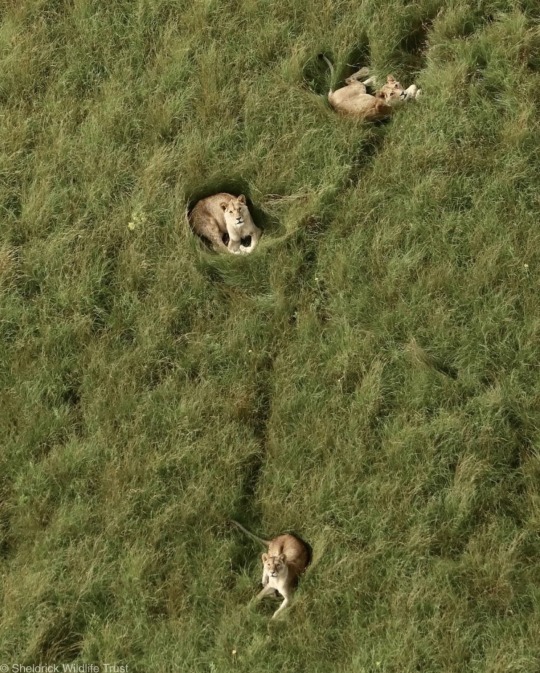#Lions of Tsavo
Explore tagged Tumblr posts
Text

What I'm reading at the moment.
4 notes
·
View notes
Text
Tsavo Region, Kenya...






#nature#africa#east africa#kenya#tsavo#tsavonationalpark#river#safari#plains#zebra#elephant#lions#walking in nature#naturecore#naturelovers#nature photography#landscape
10 notes
·
View notes
Text
Ghost and Darkness, The Man-Eaters of Tsavo

30 notes
·
View notes
Text
I haven’t seen The Ghost and The Darkness (1996), but I’m at least somewhat familiar with the story of the Tsavo Maneaters (two preternaturally cunning lions who preyed on laborers at a British railway construction site in Kenya). My question is this - does the movie count as folk horror?
#The Ghost and the Darkness (1996)#Tsavo Maneaters#Folk horror#So much of folk horror IMO deals with#landscapes haunted by guilt#and since there were stories at the time about#the lions being demons and/or spirits#specifically preying on colonizers#I’m curious
2 notes
·
View notes
Text

top ten animals to show up in my dreams dragging unsuspecting soldiers into the dark, frigid depths of the antarctic ocean never to be seen again👍
#lions of tsavo: antarctica edition#she has done this in canon btw. interesting that my subconscious made a movie about it#oc kali#oc aster
16 notes
·
View notes
Text
Today's gay icons are The Tsavo Man-Eaters, pair of gay lions who actively hunted humans (in it around 130 colonizers) in Tsavo, Kenya between March and December of 1898. Happy pride everyone!
6 notes
·
View notes
Photo

Amunoyo Chibi Couple
Sticker Chibi Comm I did for anonymous Oyo belongs to anonymous Amunet belongs to me!
Posted using PostyBirb
#amunoyo#lions#lioness#tsavo#chibis#chibi#couple#felines#bigcats#digitalart#ocs#orignal Characters#grapes#Amunet#Oyo#Sticker#Stickers
0 notes
Video
youtube
The FULL Story of the Man-Eating Lions of Tsavo
0 notes
Text
Travel to Tsavo for a true "Out of Africa" Experience

We stayed in a farm in Africa, at the foot of the Ngong Hills. But that isn't really the start of our adventure. It really started in Mombasa and getting picked up by our guide/driver Sammy. He will be with us for the next 6 days from Mombasa to Tsavo to Amboseli National Park and then onto Nairobi. Sammy is friendly, easy to talk to and knowledgeable about not just mammals but about all the birds that we are seeing. This was especially important to Kati who loves to photograph all the birds in Africa. It took us a couple of hours to get to our lodge in Tsavo East and the time went by quickly. We stayed at Satao Camp and were lucky enough to get the tent closest and facing a very popular water hole. Like watching "Animal TV", over the next couple of days and nights we saw herds of elephants, antelope, giraffes, hippos and warthogs walk out of the bush and come to this waterhole. This was the start of our adventure, and we were happy to be back in Africa.

One of the many lions we came upon watching, waiting and enjoying the sunset.
Why Tsavo?
Tsavo is the place where there were two man-eating lions roamed and ate over 100 people in 1898 as depicted in the movie The Ghost and the Darkness starring Val Kilmer and Michael Douglas. Tsavo East is the largest game park in Kenya, and it was a choice we had to make: Tsavo East or Tsavo West. We chose Tsavo East mainly because of Satao Camp, and we are happy we did. Over the next 4 days we saw lions after a kill, the red elephants of Tsavo, hippos, giraffes, and a leopard in a tree with its kill. The landscape was surreal. Dusty and dry, Tsavo needed the rains. But they never came while we were there. We also found The Real Africa, like the one described by Isak Dinesen's book Out of Africa. Set out in the middle of the bush, our camp and the water hole were perfectly situated for the game drives and to see a multitude of animals coming and going from miles away to drink. We could experience the joy of the elephants coming over a ridge and seeing the water hole. Herds of zebra and antelope. We even had a genet in the dining room that came one night looking for food. With the fire roaring, we ate delicious food for breakfast, lunch and dinner and had game drives most mornings and evenings. We had a whole day game drive on one of the days and it proved spectacular as we saw 5 lions on a hunt, and then they came and sat down. We were so close as they relaxed, slept and kept vigil. This was an incredible experience and we really felt that we found The Real Africa. This was why we came back to Africa. It did not have the multitude of animals like Masai Mara, but it had the look and feel of a real African adventure. Don't get me wrong, if there was one place, I would recommend seeing the Big 5 it would be the Masai Mara or to experience the Great Migration. But we were looking for something different. Something that I had not experienced since I lived in Africa. Something that was totally unexpected. And Tsavo delivered.

A herd of Zebras looking to finally get a drink in the dry and dusty savannah.
An Incredible Adventure
This was the fourth time Kati and I have been to Kenya. We have also explored Uganda and Egypt, and I have lived for over 4 years in Zimbabwe and almost a year in South Africa. We have also traveled to Cape Verde, Botswana, and Morocco, so we are not strangers to the African continent. But this time we wanted something different. We wanted an "Out of Africa" adventure filled with animals, tented camps and great scenery. And we got just that. With our tent, beautifully decorated with old Africa furnishings and overlooking the water hole, we were able to view animals from a couple of kilometers away traveling through the dusty bush. The obvious joy that elephants experience when finally viewing the water hold was incredible. They would start to trot, flapping their ears almost with smiles on their faces. Big Tuskers, mothers with their young, and single bulls all came and went. We never tired of it. In the evenings, Impala filled the camp while jackals were on the prowl. Hippos left the water hole and went to graze all night returning in the morning and elephants took over. Zebra, water buck and giraffe all visited. And there was a genet who would come into the dining room looking for something to eat before heading back into the bush. From our tent and around the camp we also saw owls, eagles and oryx. This all happened before we even left for a game drive. This was a nightly occurrence as we lie in bed watching the animals come and go in front of us. It was amazing. There were many camps to choose from in Tsavo, but we chose Satao Camp. It gave us that great adventure and "Out of Africa" feeling, and the cost was good. We found the Real Africa and will return here in the future.

The view from our tent overlooking the water hole.
Game Drives
We had two private game drives a day set up. Both in the morning and evening. Sammy our guide suggested we take one day and go further into the park and spend the day. Satao Camp prepared a lunch box for us and we set out on our journey. Tsavo was incredibly dry and dusty. The red earth filled with air as we looked for the iconic African animals. Sammy was outstanding and knowledgeable about all the animals, the park, birds and where to go for the best views. One of the best aspects of Tsavo is that it is uncrowded, and we were virtually alone most of the time we were there. The final day, as we were almost out of the park, looking for a cheetah, we heard that there was a leopard in a tree with its kill. Sammy asked if we wanted to go back. Of course we did! A leopard in a tree? That was on my want list for a long time. Having seen 4 leopards previously, they were all on the ground I really wanted to see a leopard with a kill up in a tree. We raced to where it was and by the time we got there, the leopard left the tree. But as we got discouraged, Sammy said he spotted it in another tree. It had climbed up to keep an eye on his kill, and there he was. Sammy spotted it and we were overjoyed as we snapped photos. Sammy was a great guide filled with knowledge and willing to share. We loved spending our time with him and were sad when we left him in Nairobi.

Finally we found the Leopard in a tree. He had his kill in a nearby tree and kept watch.
Our Final Word
After four incredible days, we had to say goodbye to Tsavo. It was filled with iconic African wildlife including leopards, lions, elephants, giraffe, kudu, waterbuck, impala, zebra, oryx, owls, eagles and a whole lot more. We continued our adventure to Amboseli National Park which is famous for its large herds of elephants and spectacular views of Mount Kilimanjaro. We will cover that part of the adventure in another post. We wanted to find the Real Africa and we did. We wanted that true Out of Africa experience, and we got it in Tsavo. We ate delicious food under the African moon, watched animals at the water hole, had incredible game drives with Sammy our guide every day and still had time to read, write and relax. This adventure checked off all the boxes for us and we look forward to returning someday. If you are looking for a true, authentic African adventure that is not overrun by tourists then look to Tsavo and Satao Camp. We just might see you there. Dennis would like that. This map was created with Wanderlog, a trip planner on iOS and Android
Related Posts
Read the full article
0 notes
Text
An African childhood
I spent most of my childhood in Africa, from 1959 to 1970. First in West Africa, then, after a brief Dutch interlude, we went to Kenya, East Africa, in 1967. Kenya’s independence was quite recent: December 1963. The first president was Mzee (old man) Jomo Kenyatta, the leader of the Independence movement. For us kids, the magic of Africa was an every day matter. The above is a “red” elephant at…

View On WordPress
0 notes
Note
That "everything My Pride got wrong about lions" list you mentioned in one of previous asks? Would love to actually see that 👀
We don't have an exact "list" per se but here's the main things that spring to mind that are shown in MP that are factually incorrect:
Prides are led by a single male and no other male may have control of the pride: incorrect. Prides can and will consist of more than one male and males will sometimes team up to run out the resident male or males.
Lions can bite through a rival's mane: a lion's mane is like thick, fluffy armour that protects the throat and it absolutely cannot be penetrated in the manner like Quick did with Starmane. This is why lions actually opt to attack the face, the back, or the hips.
Lionesses do not defend their cubs from rogue males: lionesses absolutely do defend their cubs from males, including those that are related to them by blood, such as the father. They're very protective mothers. There's even reports of lionesses running their cubs away from the pride and hiding them so the rogue male cannot find them.
Lions are active during the day: lions are actually crepuscular and more active at dawn, dusk and at night for the African nights are cooler and present better hunting opportunities. They tend to rest during the day. I know there are instances where this isn't the case, but that just comes with being opportunistic hunters. They will also hunt during storms, uilitising the weather to their advantage. Hence why Travellers have names related to the weather. We just thought it was a cool fact.
Lions have slit pupils: lions, like all big cats, have round pupils. There are theories as to why this is, but at the end of the day, only domestic cats have slit pupils.
Male lions are called manes: Yes, we know that this is a xenofiction thing and MP has every right to adopt their own vocabulary, but people literally think that male lions in a pride are called "manes" and male lions not in a pride are called "no-manes". So apparently it needs to be said that male lions are simply called lions, and females are lionesses.
Tsavo lions are a subspecies of lions that do not develop full manes: So, this appears to be a misconception that some MP fans have walked away with and I just want to correct the record on this. Tsavo lions are not a subspecies of the African lion. They are named after the geographical location where maneless lions are more apparent, because geography and environment seems to have an effect on how a lion's mane forms. Lions are sensitive to heat, so the hotter a region is, the less likely a mane is to form. The Tsavo region is known to be hot and dry and this is why lions there have problems developing a full mane. Genetics is also theorised to play a role. Such a thing has also been observed in West African regions and Ancient Egyptian art has also depicted maneless lions. It's also worth noting that Asiatic lions also have smaller manes than their African counterparts due to Asia having a hotter climate. This is why some of our characters like Fade and Larkspur do not have full manes. Both of them have either been raised in a desert region or a region adjacent to a desert and the heat has affected them developing a full mane. So, Moonstrike being described as a Tsavo lion was completely pointless and confusing. I can only assume it was Tribble trying to flex her lion knowledge but she also didn't even bother to explore why exactly Tsavo has a connection to maneless lions, thus fans assuming that the lack of a mane is down to Moonstrike being part of some sort of subspecies. I'm probably missing some things out but this is what I have so far. - RJ
139 notes
·
View notes
Text

Young lions resting atop the emerald Chyulu Hills, wild dogs creating a shadowy illusion in Tsavo East - we may only be a few weeks into 2024, but our pilots have already been treated to some spectacular sights while on patrol.
— Image and words by Sheldrick Wildlife Trust
131 notes
·
View notes
Text
We're both Losers Baby
Say hello to almost everyone's favorite side ship. HuskerDust. I say almost everyone because I know there are some people who aren't as big on it but I know enough people on here who check out my account do enjoy themselves some HuskerDust. So say hello to my Angel x Husker lionized-.. Technically in their case it's big feral cats as neither of them are lions. The art was done by the same artist who did Carmilla for me. (She's also working on Sera :3) The art was done by TruDraws. When I was getting my friend's opinion on this I realized lions while amazing they just didn't fit these two in a sense, so I did a little research when it came to Angel Dust and I had two big possibilities on him. Tsavo was my fall back if I couldn't find one and than I found a very rare breed of Cheetah. One so rare that they're technically always kept in captivity because the chances of them surviving in the wild was nearly non existent. I based Angel Dust's design off of a Asiatic Cheetah. A cheetah species that tends to grow a lot more fluff around the neck. Of course I was not going to take away Angel's gorgeous colors. Next we have Husker, who I based off of a Melanistic Leopard. Just cause he's a slightly thicker boy and honestly leopards just look beautiful so I couldn't bear to pass it up.

So enjoy these lovely losers in all their glory. As always you are not to share or redistribute. If I wanted these designed reposted anywhere, I would do it myself so please don't repost without my permission.
#hazbin hotel#hazbin hotel fandom#hotel hazbin#fandom#hazbin hotel angel dust#angel dust hazbin hotel#hazbin hotel angel#angel dust#husker#husk hazbin hotel#hazbin husker#husker hazbin hotel#husker x angel dust#huskerdust#hazbin angel dust#angel x husk#Angel x Husk#Angel x Husker#Lionized#Hazbin Lionized#TLK AU#Lion AU
33 notes
·
View notes
Photo

Romantic Evening
Commission from way back in 2021! I've really been slacking on uploading these couple of years so gonna try and catch up friends! Still really proud of this piece, mostly just that I got practice in for drawing other ocs interacting cause before that, lemme tell you, I only ever drew subjects by themselves lol Oyo belongs to Anonymous Amunet belongs to Me (Mx.Corvidae)
Posted using PostyBirb
0 notes

